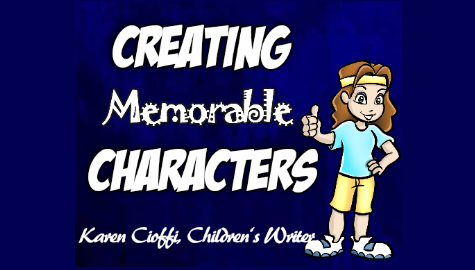From the simplest clues, a character can take shape.
Maybe you first reference the character as the boy or the tall girl. Even with those simple words, you’ve given that character life.
Before that, there wasn’t a boy or a tall girl.
Below are five dos and don’ts for crafting your characters.
- Don’t over-dump physical details.
While it’s important to bring your characters to life through description, it’s best to limit including too many details. In other words, avoid over-dumping physical details.
An example of this might be Raul. A tall and thin twelve-year-old with green eyes, dark brown hair, and a swimmer’s body.
While you won’t be able to write all his details in one scene, and you shouldn’t even try.
However, there are techniques to convey physical characteristics without overdumping.
To convey his height:
-The boys took turns hurling the paper airplane through the air until it got stuck in the branch of a tree. “You get it, Raul. You’re tall,” said Shawn.
To convey his hair color:
-From the back, Mrs. Stenzer couldn’t tell which boy was Raul. They all had dark brown hair and were medium height.
To convey his body type:
Raul was the only new kid on the swimming team who already had a swimmer’s body.
If you need or want to let the reader know the character’s physical characteristics in your story, simply work that information in without dumping it.
- Avoid being too vague.
While you shouldn’t convey every detail of a character, you can provide enough to give the reader an idea of the character’s physical attributes. The reader can then fill in the details.
Two examples of this might be:
-His neat cut in the back and sides contrasted with the long hair in front that fell far below his brows.
-He stretched his swimmer’s body and then raced into the ocean.
- Include the character’s environment.
A character may live in an apartment in a low-income building. Another may live in the back woods of Appalachian Mountains. All this will give insight into the character.
Or the character may live in a penthouse on the Upper East Side of Manhattan. Or the character lives in Saipan.
The character’s environment can also include elements of his characteristics.
I ghostwrote a book in which one of the characters going from a wealthy lifestyle to a poor one. This could tell a lot about why the character behaved a certain way or why she was depressed.
Another scenario may be that the protagonist had been on a swimming team since he has been seven. This will tell a lot about his character. It takes discipline and drive to be a competitive swimmer. It will also have a significant factor in his physical appearance.
- Include the character’s close relationships or past relationships.
How your character engages with the different people in his family, friends, and new people will show different facets of his character.
The friends he associates with will also reveal some his tendencies and character. The expression ‘birds of a feather flock together’ can play a factor in the character’s personality.
- Include appearance, clothes, and even sundry items.
How you describe your character’s appearance can tell a lot about that character.
-Are his clothes neat and ironed, with his shirt tucked inside his pants?
-Is he unkempt? Are his clothes wrinkled, with his shirt partially tucked in, or not?
-What about her hair? Is it a mess? Does it look dirty? Or is it well-groomed?
-Is his hair short or long? Is it well-kept?
-What does she keep in her backpack?
-Does she always chew gum?
-Does he always use breath mints?
-Does she always have a candy bar on her?
-What about a comb?
The list can go on and on. And each little item provides another clue as to the character’s nature.
These are just five tips on how to use description to enhance your readers’ view of your characters. There are others, but this should give you a solid foundation for creating engaging characters.
To read more on crafting characters you can check out: Creating Your Main Character Part1

I’m a working children’s ghostwriter, rewriter, editor, and coach. I can help turn your story into a book you’ll be proud to be the author of, one that’s publishable and marketable.
OTHER HELP I OFFER:
HOW TO WRITE A CHILDREN’S FICTION BOOK
A DIY book to help you write your own children’s book.
PICTURE BOOK AND CHAPTER BOOK COACHING
Four to ten-week coaching programs.
You can contact me at: kcioffiventrice@gmail.com.

Outlines and Character Details – Tips on Writing a Middle Grade Story


5 thoughts on “5 Power-Tips to Creating Memorable Characters”